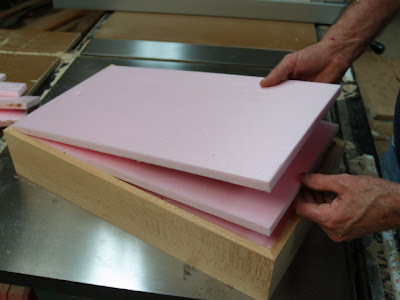1. conviviality - sociableness - the relative tendency or disposition to be sociable or associate with one's fellows
2. conviviality - a boisterous celebration; a merry festivity
a jollification, merrymaking festivity, celebration
I have been contnuing my reading of
Tools for Conviviality.Its author, Ivan Illich was an admitted socialist. Sadly, that would put anything he might suggest in question for some regardless of its merits. I would prefer to be a bit more open minded than that.
One day, a few years back, my wife and daughter and I were making college visitations and met a young man in the UT Scholars program who when told about educational sloyd, said, "Oh that's Marixist, isn't it?" Something about the "dignity of all labor" can send spasms through the intelligentsia. After all, what we all working so hard to avoid? Language is a convoluted thing, charged with emotions and colored by suspicions and doubts created by past efforts to dominate and control.
But putting aside
Illich's socialism, if you can stretch your heart and mind so far, I want to consider the idea of conviviality. Is the purpose of life and education, that of better competing in the 21st century and maintaining dominance of one culture over another, or is the purpose of life, culture and education that of enabling us to get along with others, creating a more stable, and resilient human life?
I am in Manhattan, having come to New York to welcome my daughter home from Ghana, and to help her get moved into her dorm for her senior year at Columbia. She brought me a souvenir, perfectly representing the choice we face in attempting to achieve conviviality, a machete. In Ghana, machetes are an all purpose tool used to cut the grass and to keep the bush at bay, but in some parts of Africa, machetes have been used in murder. Each tool, as described by Illich offers an edge that can be turned to cut either way. Interestingly, the tool that Lucy took
to Ghana that carried a sense of western conviviality was her genuine Leatherman tool. Not only did it provide a means to screw and unscrew and cut things, not having a real paring knife in their make-do communal cook-on-the-floor kitchen in their Ghanaian village of Obodan, the Leatherman sufficed wondrously. In our small rented apartment near the Flatiron building, and untrained in the full functionality of the machete, the built in phillips screwdriver of Lucy's Leatherman enabled me to fix the coffee pot. If there was ever an election for the most convivial tool of all time, the Leatherman would be a contender as to my knowledge there has never been one involved in the conviction of murder.
Illich idea of conviviality is an interesting index to use in the observation of human progress or decline and it is a great tool for people watching in the city. Manhattan is not exactly the place in which I feel most at home. Due to my being in New York, my posting may be sporadic. In the meantime, New York is a great place to consider conviviality and how it applies to the wisdom of the hands.
Our nation's cities are on the rise again after so many decades of flight to the suburbs. The cell phone and iPhone are important tools in facilitating this reversal of urban fortunes. These communications tools are making cities more convivial in tone as people stay connected with each other and use them to facilitate social engagements. At the same time, they, like any other tool, can give a sense of isolation and anomie. People use the same tool to connect with peers and loved ones, and simultaneously isolate themselves from unwanted social encounters. As an example, as my wife and I looked for a laundromat, we could have used her iPhone to find one, but she chose instead to ask, providing the opportunity for a friendly response. Those simple social interactions have long been the foundation of society as the means though which kindness is expressed to strangers. You may note that tools have the potential of being used with care and attention or mindlessly toward the destruction of meaningful relationship. How do we now take these exclusive items, much coveted by all, and make them tools for inclusion and conviviality? If we can work that out, being watchful of our excessive use of technology, and leaving space between calls for unexpected things to arise, our cities will become even more wonderful places to live and work. That's conviviality.




































